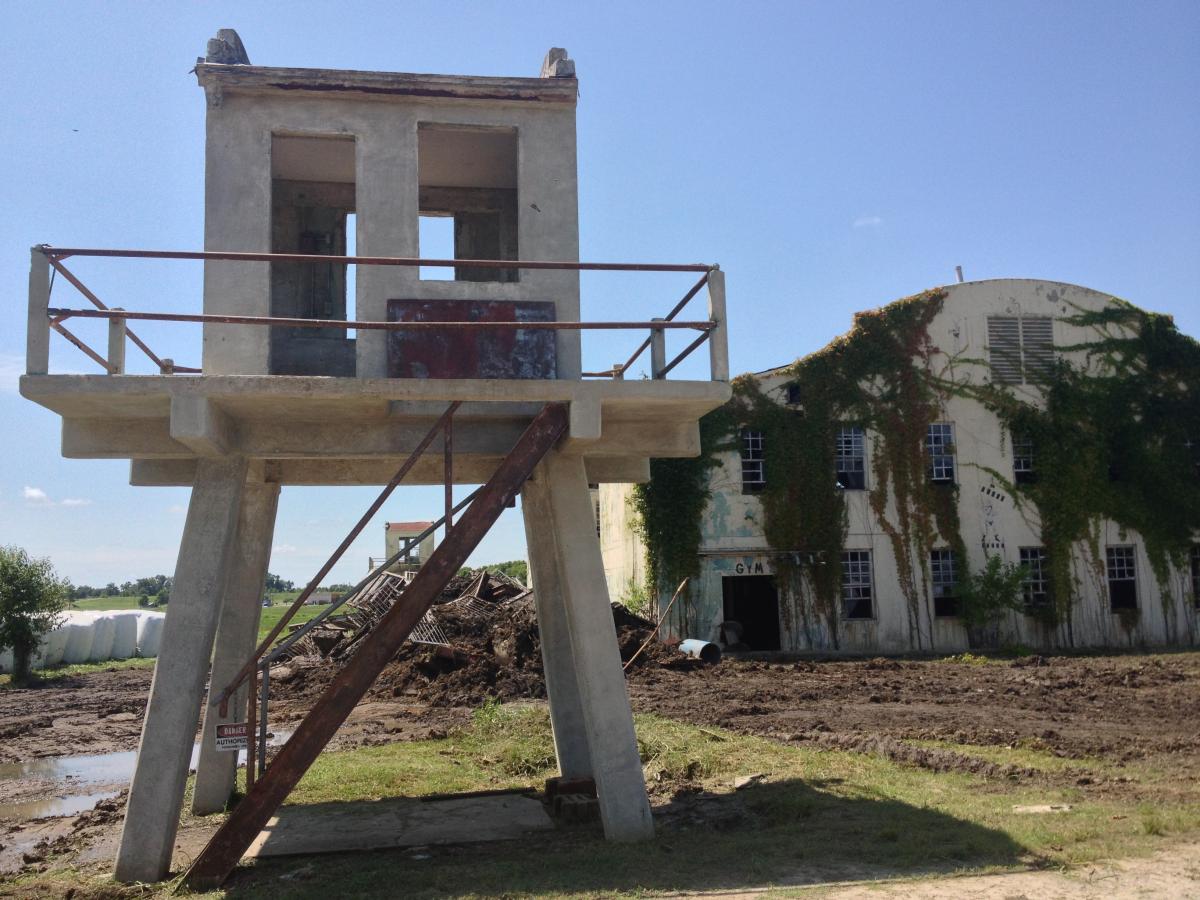African American
Related: About this forumSegregated railcar, prison tower anchor Smithsonian black history collection
WASHINGTON — In the underbelly of the Smithsonian National Museum of African American History and Culture looms an ominous, 21-foot-tall guard tower erected in the 1940s to surveil the yard at Angola Prison, also known as the Louisiana State Penitentiary. A gift from one of the most notorious maximum-security prisons in the nation, the tower is a haunting reminder of a post-Civil War campaign to incarcerate African Americans on spurious charges.
African American History and Culture
Museum Director Lonnie Bunch stands in-front of one of the engravement walls of the Smithsonian's National Museum of African American History and Culture. Paul Holston, AP
“One of the most important stories we wanted to tell was the impact of the criminal justice system on America,” director Lonnie G. Bunch III said during Monday’s media preview of the Smithsonian’s newest museum.
“Angola began as a slave plantation and evolved into a penal system. This (exhibit) centers on the creation of the convict-lease system where, after slavery, in order to control African Americans, they were arrested on bogus charges. They were then leased out to companies, to the state, to do work. So, even though they were free, it was still like slavery.”
Bunch said aspects of the present criminal justice system reference that history. His task is to make the connection clear when the museum opens to the public on Sept. 24. President Barack Obama will keynote the grand opening ceremonies, 13 years after President George W. Bush signed legislation establishing the museum, which tells the history of the United States through the eyes of African Americans.
“By weaving in contemporary issues, our goal is to help the public realize that this is not a place about yesterday,” Bunch said. “It’s about yesterday, today and tomorrow.”
The contemporary 400,000-square-foot structure, just across the street from the Washington Monument, features a bronze-painted aluminum lattice exterior that harks back to ironwork made by slaves in New Orleans and Charleston.
More: http://www.usatoday.com/story/news/2016/07/19/advance-preview-national-museum-of-african-american-history-and-culture/87278412/
One day before I die I would like to go there.
calimary
(89,040 posts)I'm glad these artifacts are being saved. Because, knowing the denial so much of America keeps itself in, these days, it's nice to have some actual physical concrete proof to show. And some of 'em are so far gone they won't even believe that. But still, proof is nice to have.
sheshe2
(95,879 posts)The artifacts are truth of our history. So poignantly sad.
Nitram
(27,052 posts)A long hard look into the darkest corners of American history is not for the fainthearted.
packman
(16,296 posts)I sincerely hope it is many, many days before you die that you get to go there.
![]()
sheshe2
(95,879 posts)Pretty sure I have a ways to go. ![]()
Historic NY
(39,644 posts)one thing Smithsonian does and does well, tell the story.
awoke_in_2003
(34,582 posts)K&R. Have a good weekend, She ![]()
sheshe2
(95,879 posts)You as well~ ![]()
bettyellen
(47,209 posts)Thanks so
Much !!!!
SunSeeker
(57,546 posts)NWCorona
(8,541 posts)
I hope you get the chance to make it.